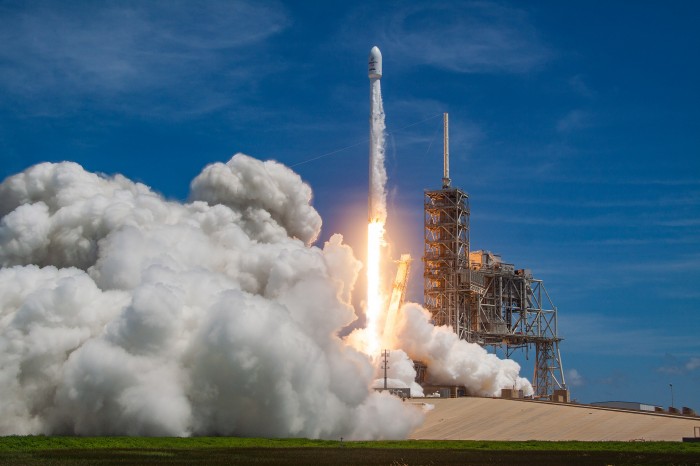SpaceX Is Making Commercial Space Launches Look like Child’s Play

Late Friday, SpaceX launched a satellite into orbit from Florida using one of its refurbished Falcon 9 rockets. Then on Sunday, for good measure, it lofted 10 smaller satellites using a new version of the same rocket, which it launched from California. The feat is a sign that the private space company seems more likely than ever to turn its vision of competitively priced, rapid-turnaround rocket launches into reality.
Ever since it was established, SpaceX has sought to turn commercial spaceflight into a profitable venture. A fundamental part of that vision is its reusable rockets, which were one of our 10 Breakthrough Technologies of 2016. By launching, landing, and refurbishing boosters, it hopes to massively cut the cost of putting satellites into space. But it hopes to crank up the frequency of launches, too, in order to generate as much revenue as possible.
It showed in March that the first of those goals was achievable. But numbers from the weekend’s launch activity show that it’s doing a very good job on the second, too. The successful missions notch the firm’s current launch count for 2017 up to nine—the most it’s ever achieved in a calendar year, and we’re still only six months in. The firm has now managed to land 13 of its rockets after launch, and Friday’s mission was the second time it’s successfully reused a rocket.
Meanwhile, the rest of the space industry looks on. While plenty of organizations are trying their hand at developing ways to reduce the cost of launches, none can match SpaceX’s success to date. Its president, Gwynne Shotwell, said earlier this year that the cost of flying a refurbished booster was potentially less than half that of building a new one for each launch. And its CEO, Elon Musk, knows from experience that those successes are positioning SpaceX to become an incredibly powerful force in the future of space exploration.
“Imagine if we were an aircraft company selling aircraft that could be flown many times, and everyone else was selling aircraft that could be flown once,” he said after the first successful reuse of a SpaceX rocket booster. “I mean, you know, that’s not a very competitive position to be in.” And this point, it looks more than ever as if the commercial space race is SpaceX’s to lose.
(Read more: BBC, “SpaceX Has Reused Its First Rocket,” “SpaceX Has a Reusable Rocket, and Now the Race Is On to Perfect Them,” “10 Breakthough Technolgies: Reusable Rockets”)
Keep Reading
Most Popular
Large language models can do jaw-dropping things. But nobody knows exactly why.
And that's a problem. Figuring it out is one of the biggest scientific puzzles of our time and a crucial step towards controlling more powerful future models.
The problem with plug-in hybrids? Their drivers.
Plug-in hybrids are often sold as a transition to EVs, but new data from Europe shows we’re still underestimating the emissions they produce.
Google DeepMind’s new generative model makes Super Mario–like games from scratch
Genie learns how to control games by watching hours and hours of video. It could help train next-gen robots too.
How scientists traced a mysterious covid case back to six toilets
When wastewater surveillance turns into a hunt for a single infected individual, the ethics get tricky.
Stay connected
Get the latest updates from
MIT Technology Review
Discover special offers, top stories, upcoming events, and more.